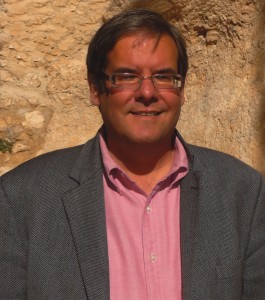The center for Immersive Learning and Engaged Teaching, to be housed in a 21st century library, is designed to help all of us achieve the collective need to “build on the block,” to push our imaginations, our intellects, and our spirits in new directions.
 As a faculty member, I am particularly excited by the following ways that the center will facilitate teaching. First, it will create a central space on campus that will bring together the myriad offices that assist students and faculty in the classroom experience itself. Second, it will provide the personnel and technological resources to build bridges between what happens within the block and other academic experiences on campus and beyond. Finally, it will support our commitment to promote the idea of lifelong learning, giving students the resources to make connections between their lives on and off campus, and drawing on the expertise and commitment of our alumni and parents to enrich the learning environment of Colorado College.
As a faculty member, I am particularly excited by the following ways that the center will facilitate teaching. First, it will create a central space on campus that will bring together the myriad offices that assist students and faculty in the classroom experience itself. Second, it will provide the personnel and technological resources to build bridges between what happens within the block and other academic experiences on campus and beyond. Finally, it will support our commitment to promote the idea of lifelong learning, giving students the resources to make connections between their lives on and off campus, and drawing on the expertise and commitment of our alumni and parents to enrich the learning environment of Colorado College.
Perhaps it might be useful to offer a few examples of how someone like me, a professor who does research in the history of 18th-century French sexuality, might benefit from the center while teaching at the college.
As an historian, it is essential to offer a wide variety of analytic frameworks in my classroom. I worry, however, that the rhythm of the block, particularly its very inward focus, ends up too often reinforcing my own take on the material at the expense of competing interpretations. With the center in place, the next time I teach The History of Sex: Modernity, I am going to ask if we could beam into the classroom an alumnus who has gone on to post-graduate work in neuroscience to consider the latest research on the biological etiology of sexuality to offer a model that might challenge my own theoretical commitments to the social construction of sexuality.
Historians are well aware that the past comes most alive when it is in conversation with the present. Too often, unfortunately, students feel that history is a desiccated discipline, sterile with no applications to their own lives. Imagine how helpful it would be, in planning my course on Enlightenment Culture, if I could go to the center to ask for help in bringing in a community engagement component that focused on applied history. After all, if there were ever a time in which scholars felt that the world had to make use of knowledge, it was the 18th century! Would that we follow in their footsteps!
I can think of many ways that the center will be able to help me create a wider learning community. When I teach off campus, for instance, it would be fantastic to have alumni or parents join the course for all or part of the block. They would add different perspectives to enrich the experience, as well as providing mentorship to current students, both personally and professionally.
Similarly, if we offered, say, a summer experience that focused on France, we could bring to the center a scholar-in-residence who works on some aspect of Francophone culture. That person could hold seminars for students who had participated in the program, helping them to reflect on their experience and think about how to build on it in the future.
It’s hard, in fact, for me not to go on and on about how great this center is going to be!
Professor of History Bryant “Tip” Ragan was chair of the Engaged Teaching and Learning Committee.